A well-controlled offensive is very difficult to stop, especially for a rookie coach. Here are some tips that may allow you to stop an offensive … and even, who knows, maybe steal the ball.
Before going on with the tools, let’s review the main offensive tactics you can meet and their main countermeasures.
cages
This type of offensive is emblematic of Khemris, Dwarves, and Orcs. It is made up of a more or less compact group of strong but not very agile players who progresses slowly towards your goal line. When your opponent masters this offensive type, it can be very difficult to generate chaos around his ball carrier … but if you manage this feat, you will create enormous difficulties as his players usually lack versatility.
Faced with a steamroller of this type, it is wise to deploy a defense aiming to brake it while carefully looking for opportunities to deftly mark the ball carrier. If one of your players decides to mark at a bad game timing, expect him to receive some unfortunate blocks because the reckless’ life expectancy is short inside a sturdy cage. When the situation requires it, marking the cage’s corners to hinder its progress can be advantageous, but also potentially very hard on your team’s health.
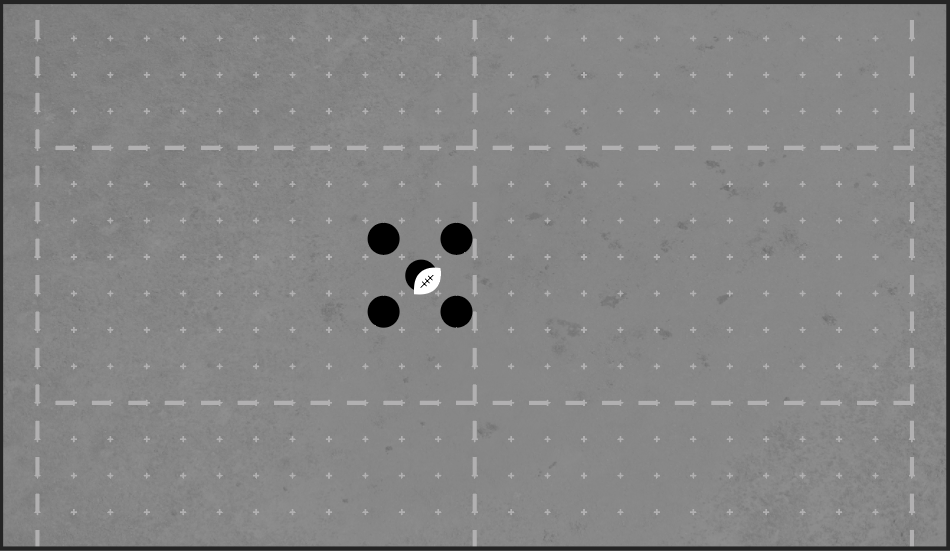
runs
This offensive type is typically used by midway teams (races neither very agile nor very sturdy) that benefit from unreliable flexibility. Humans are emblematic of this play style but we can also include Undeads, Necromantics, Chaos, Amazons, and Norses. Generally, these versatile teams will use strength against weaker opponents or failing, try to circumvent them with their mobility.
A multitude of tools can be deployed against a well-managed running game, but keep in mind that your opponent has the versatility to escape (unreliably) from just about any trouble. In fact, it’s often less a question of stopping him cold than dictating his movements by feeding him an assortment of Cornelian choices. Show him the way to your defense’s strong spot and try to bottle him up. Mark his ball carrier without much hope of holding him back. Keep busy his pillars necessary to his running game. Embark him on a complicated war from which he will have to heartbreakingly dodge away. Multiply his die rolls while creating the highest possible difficulty thresholds. A failure will eventually crown your efforts … or not. If this scenario happens, try to control his touchdown‘s timing.

agile runS
Very difficult to stop, agile runs are emblematic of elf teams. Even if you manage to make them lose the ball they are very apt to recover it due to exceptional agility and when under pressure, it is often only a matter of time before a touchdown follows a pass.
When facing a fast and agile team, your tools are very limited. Circumscribing the movements of an agile team is very difficult and marking the ball carrier rarely yields the expected result. Use your time on defense to optimize your blocks against your opponent’s weakest players or, failing that, force him to dodge as many Dodge-less players as possible. Carefully position your players with the Tackle skill to cancel Dodge. While doing so, analyze whether it would be beneficial to gift a quick touchdown giving you the time needed to score back. Of course, if you lead the score and there is little time left, there is no question that all your efforts should rather be deployed to fiercely defend.
YOUR toolbox
Here are the main tools that every good coach has in his trunk to stop an offensive. Very often, a single tactic will not be enough to defeat a resourceful coach and you will have to alternate (or even simultaneously use) several of them. These tactics are ordered by the degree of risk to your players’ health (not surprisingly, it also fits rather well with their respective effectiveness). The more often you use dark plans, the more likely you will have to constantly restaff your team!
0. Your creativity
This is any coach’s WD-40 … the joker hidden in your sleeve. A coach who effectively uses the tactics below will offer strong opposition. However, being creative may be that little extra edge to victory. Therefore, do not be afraid to surprise your opponent with the unusual, but always keep in mind the risk versus reward ratio. Nuffle‘s law stipulates that a coach mindlessly risking is doomed to fail often.
1. Columns defense
Sometimes braking an offensive without confronting it directly is all that is needed to win a game. Interesting, do you say? Indeed! And the cake’s icing is that it is potentially the least risky tactic for your team’s health. In an ideal world, you simply avoid contact with your opponent by limiting him to one blitz per turn while giving ground as slowly as possible. Yes, we are talking about “an ideal world” as it will definitely get dirtier than this.
To correctly deploy a columns defense, maneuver all your players in front of the opposition. Avoid sending players on its side and certainly not behind it. Also, use a wide screen rather than a compact one … because an offensive also moves aside. If you manage to bottle it up on the edge of your playground, congratulations! You have just made your job easier. If all goes well, time’s pressure will force your counterpart to try a very risky move to score his touchdown. Chances are the winds of luck will blow your way.
Of course, using a columns defense is more effective against sturdy teams since the fast and agile will simply seek to bypass you. Also, to deploy a reasonably convincing defense, you must have enough players on the pitch and this is one of many reasons why fragile teams will sometimes elect to kick the game’s first ball (it is the only moment they are certain to oppose eleven players on defense).
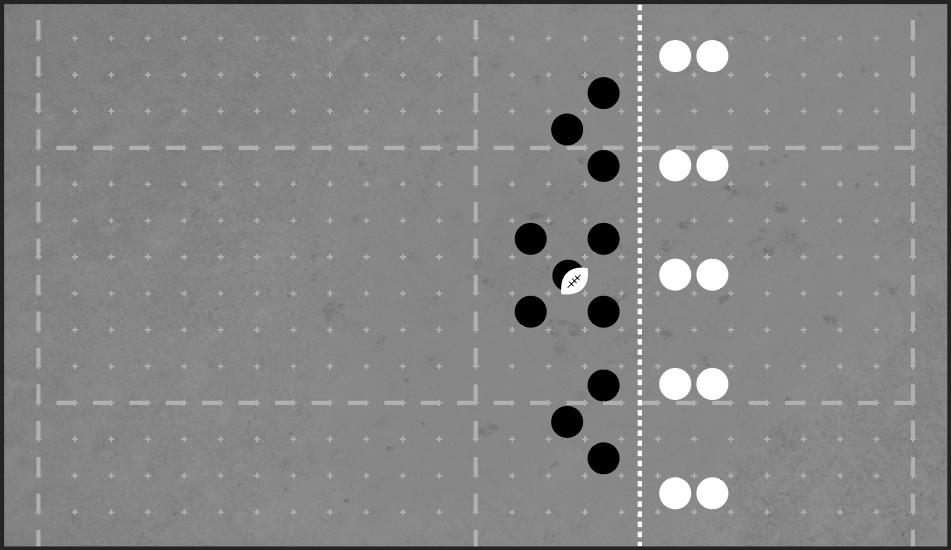
To correctly deploy this tactic, present a series of columns two players deep spaced two squares apart (see diagram). Thus, the opposing Blitz cannot create a hole in your wall to easily sneak its offensive past your defense. On each of your next turns, reform your defensive columns by freeing your players using the most efficient mix of blocks and dodges possible. Experienced coaches should expect to run into a learning curve as columns defense is certainly their level’s biggest step to master. Spacing between players can be reduced to only one square as needed and resourceful coaches will deploy this type of defense in several different ways (often named “curtain defense”). We will have the opportunity to come back to it in a future article.
Sometimes the best way to stop an offensive is simply not to tackle it.
2. Mark the ball carrier
You have spotted a golden opportunity? Open a path to your pest specialized in marking ball carriers. The opposing coach will then have a few possible answers at his disposal. Either blitz the pest, pass or hand over the ball, or dodge the ball carrier. If your pest is adjacent to another of his players, he may also attempt a block to free his ball carrier (but if you played this move, let’s just say it was not a golden opportunity).
To achieve this tactic, you have to blitz a cage’s corner and lay down the player. Then, send your pest into contact with your opponent’s ball carrier and hope that he does not botch the job. If the cage’s corner has only been pushed, analyze your current game situation as letting your pest being blocked can be a disastrous waste of resources. Ideally, you want to telegraph your opponent to use his blitz on your pest because then, this precious and unique action is not used to move his offensive forward.
This tactic is very useful against the less agile teams for whom it is very risky to dodge or handover the ball. On the other hand, mentally prepare yourself to see your pest leave the pitch on a stretcher (which can reduce your chances of winning the game). Also, keep in mind that it is often better to evoke a threat than to use it as a coach who uses this tactic excessively is at risk of playing in numerical inferiority (which, obviously, is never a great thing).
YOUR pest
Several skills can help your pest cause huge headaches to your opponent.
- Block and Dodge to stay up.
- Side Step or Stand Firm to stay in contact with the ball carrier when pushed.
- “Tackle and Diving Tackle” combo, Shadowing or Tentacles to hinder dodges.
- Fend to hopefully stay mobile and attempt this tactic again next turn.
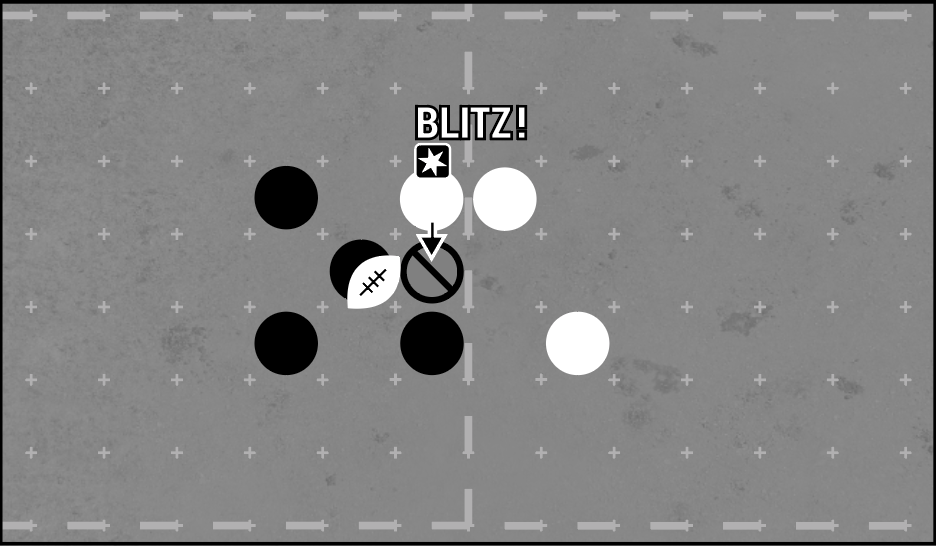
3. Leap into a cage
This tactic is frequently used by Wardancers and later on by any agile player with the Leap skill. Sometimes leaping into a cage to blitz a ball carrier is easier than dodging into it. Before triggering your leap, there are a few things to keep in mind:
- There are no skills to reroll a failed leap. It is wise to keep a reroll to cover the attempt.
- Players with Leap usually command a high salary and have little armor. A failed leap can cost you your best player.
- A failed leap is a Turnover and your player becomes extremely vulnerable to a foul.
- Before you happily go leaping and blitzing, you have to cancel the ball carrier’s assists using your own players (which is sometimes impossible if there is a well-positioned player sporting the Guard skill). These ripe players will then get hit in return. Some bad injuries of this kind can cost you the game.
- Much like the previous tactic, the threat may be more effective than its execution. Failing a leap is potentially losing the threat of a leap for the rest of the game. Weight the pros and cons before acting out.
However, there are times when this tactic will seem very juicy. A ball carrier without Block or Dodge is only asking for a wallop. Also, a ball carrier without Sure Hands is very vulnerable if your grasshopper has Strip Ball.
Finally, the less agile the opposing team’s players and the more this plan can reward you. If you are facing an elf team very agile to recover a lost ball, take some time to analyze if you are not just looking for a way to waste your player.

4. Tag the cage’s corners
The idea behind this tactic is to apply a lot of pressure by making it very difficult for the cage to progress or reform elsewhere on the field. It is a fact that a player who blocks cannot move! Keep in mind, however, that your players will suffer as many blocks in return. Repeated assaults of this type can quickly eject many of your players from the pitch … and ultimately be harmful to your team’s health.
However, when used at a key moment (for example: when pressurizing towards the end of a half), this tactic can win you a game – especially if you mark Block-less players using your own Block players… or if you benefit from a substantial strength advantage.
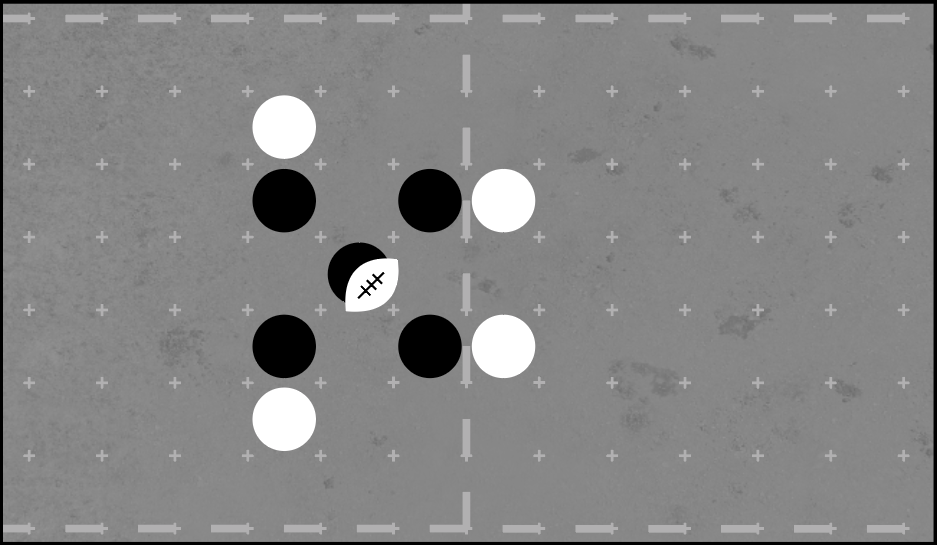
5. Attack from behind
If you need to fiercely defend, your odds will be much better if you position your 11 players in the offensive’s face. However, players in the back of a cage may be the weakest ones and blitzing them may allow you to more easily mark the ball carrier. Also, a panicking coach could possibly reward you with an unexpected opportunity on the ball.
Of course, the faster your team is, the less risky this tactic is, because you can more rapidly recreate a defensive wall … but generally speaking, a defense is stronger when all your players are positioned in front of the opposition.
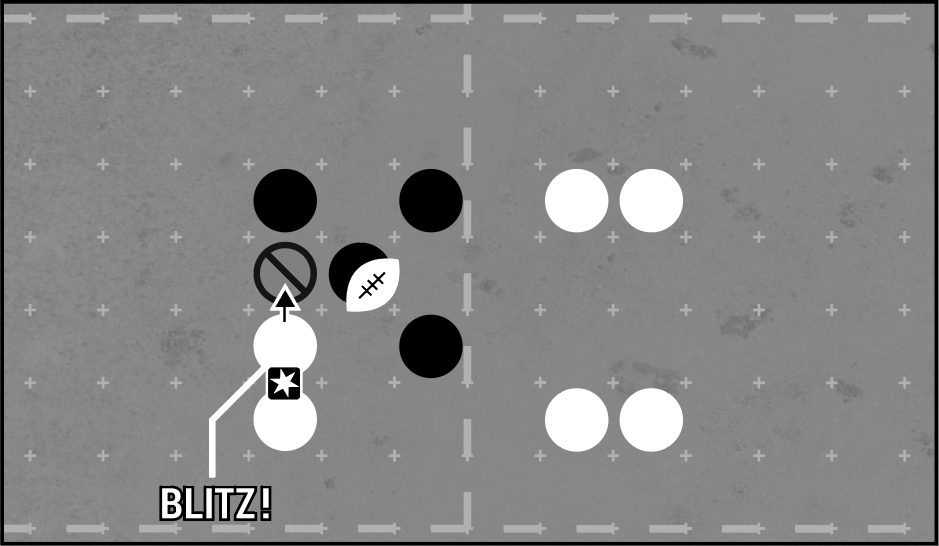
6. Attack peripheral players
Five players are needed to form a cage, leaving only six of them to face your eleven players. It can be a way of striving for a numerical advantage … or not because this tactic relies heavily on the quality of your dices. Though, this bet can be rewarding because, with one or two players out, your opponent may have more difficulty scoring … or be less inclined to delay his touchdown since he could find himself even more weakened.
This tactic is more effective against lightly armored teams as your blocks are more likely to be profitable and a particularly awkward player may eventually burn your opponent a crucial team reroll or two.
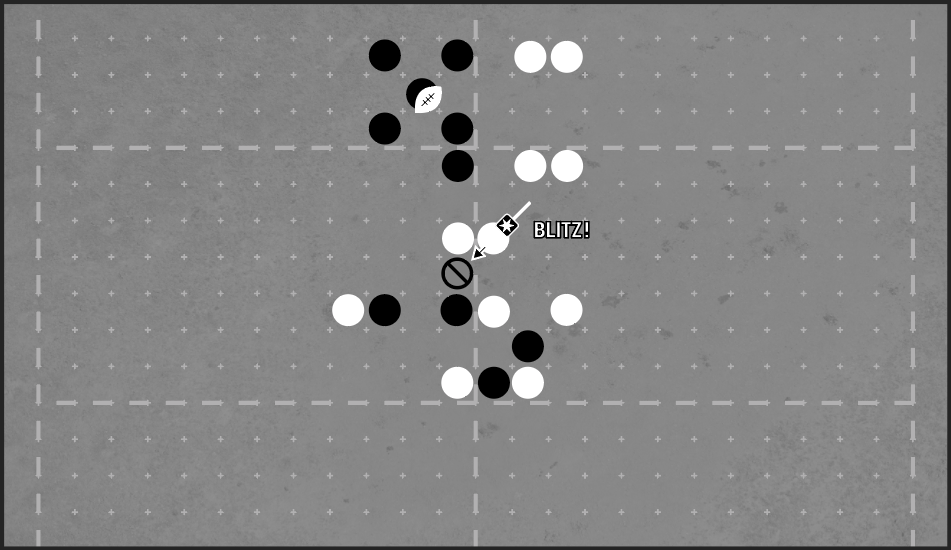
7. Dodge to the ball carrier
This is the last resort tactic when all hope is exhausted. The odds of success are not as bad as they may seem …
Dodging in three tackle zones with a reroll:
- Agility of 4 = 55%
- Agility of 3 = 30%
Of course, after that, you still have to blitz the ball carrier, but that is a whole new story we will not cover here. Ever.
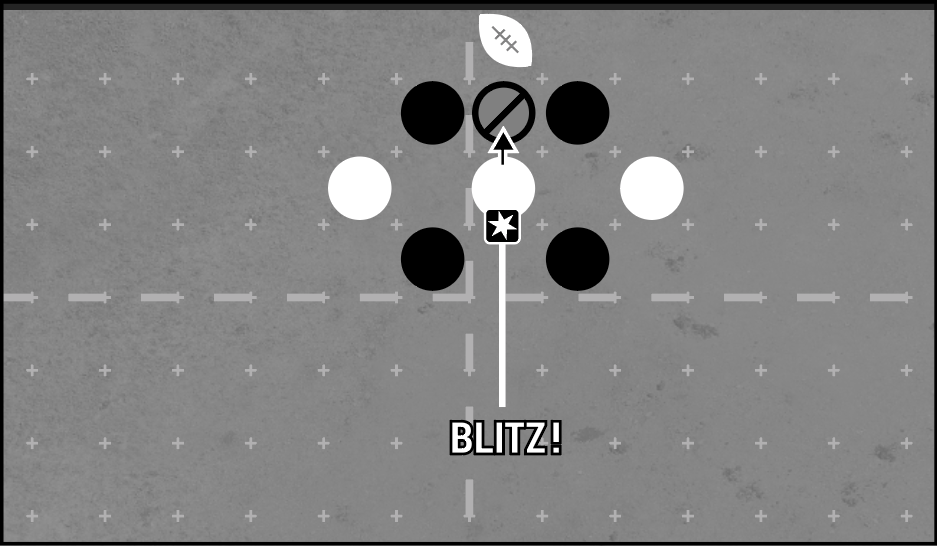
Well, that sums it up pretty well from the most reliable to the most foolish tactic. As we have seen, you do not necessarily have to directly face an offensive to stop it … and when nothing goes your way, an extremely reckless dodge can sometimes save the day. Now, experienced coaches, return to the pitch, learn to recognize the types of offensive you are facing and practice your columns defense! You will be glad you did!
[give_form id=”12090″]
FURTHER READING
- Pulling Off a Long Feint, by Taureau Amiral
- How to Move a Cage Forward, by Taureau Amiral
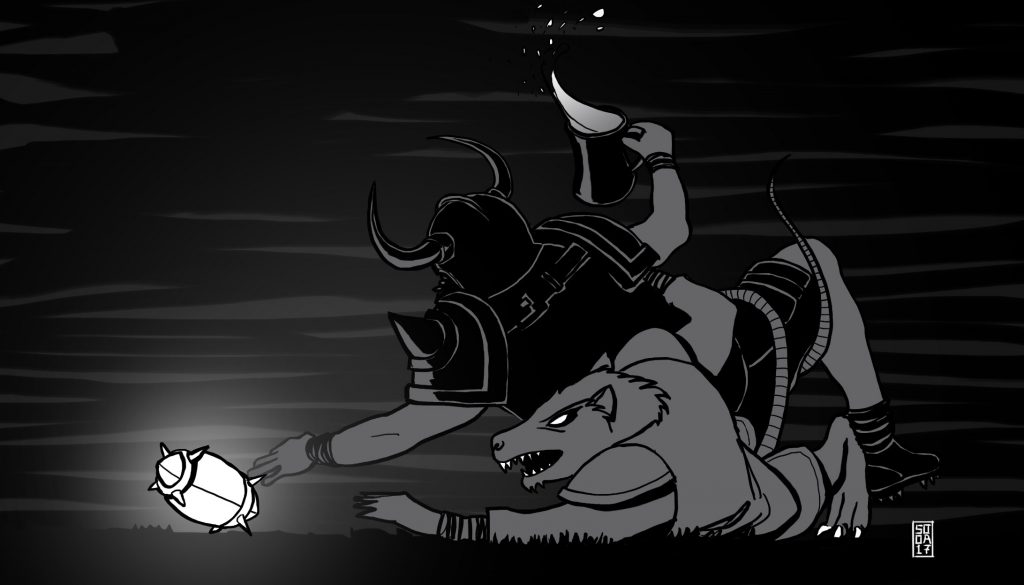
This has been really helpful and lots of food for thought, thanks.